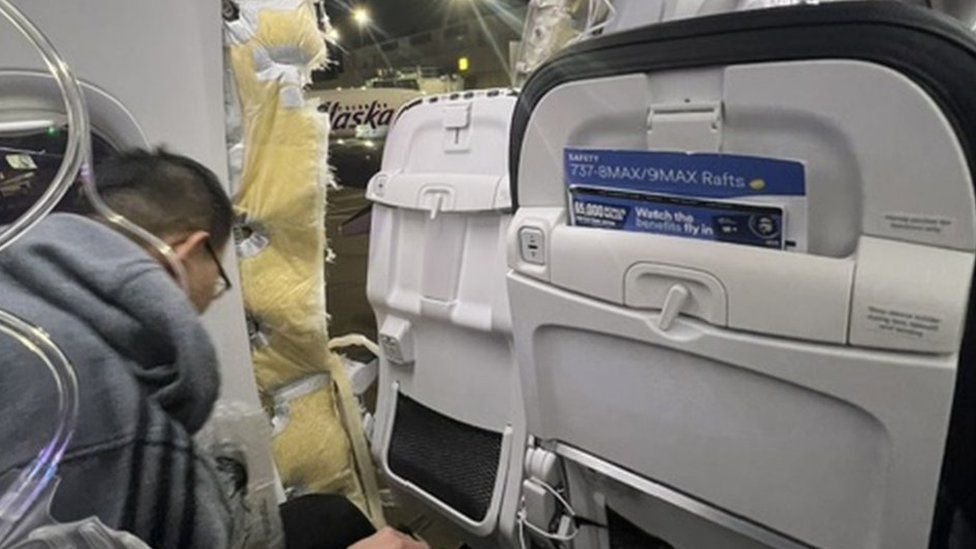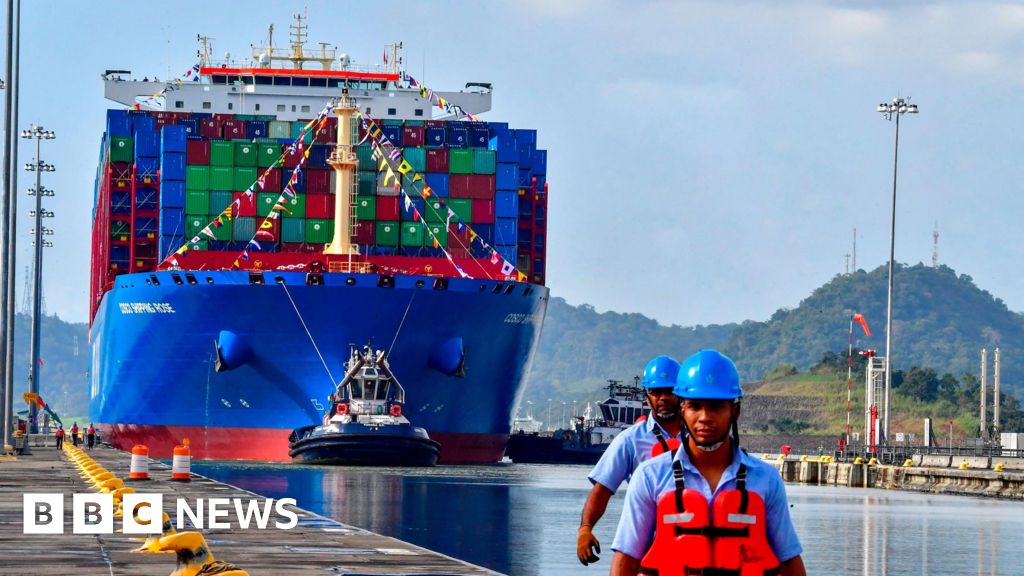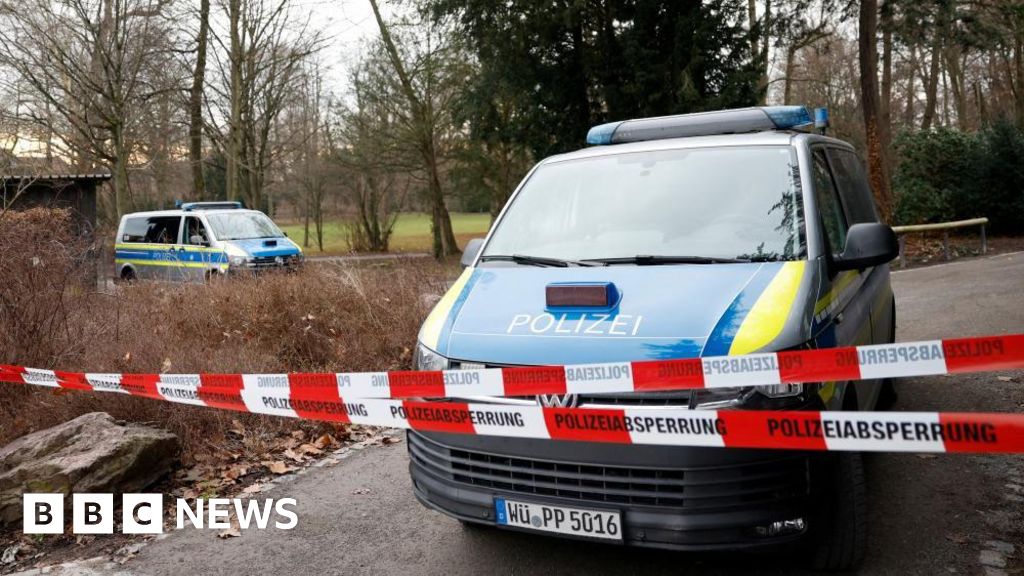ARTICLE AD BOX

Cuong Tran next to the gaping fuselage hole after landing
By Thomas Mackintosh
BBC News
A Californian man has described "holding on for dear life" as he sat on an Alaska Airlines flight inches away from a section of fuselage which flew off mid-flight in January.
Cuong Tran told the BBC his seat belt saved him as his phone, socks and shoes were ripped off by an uncontrolled decompression 16,000ft above Portland.
He is among seven passengers to have filed a lawsuit against Boeing, Alaska Airlines and Spirit AeroSystems.
The companies declined to comment.
Images shared online - and later by the National Transportation Safety Board (NTSB) - showed a wide hole in the side of the Boeing 737-9 Max aircraft, with oxygen masks dangling from the ceiling on 5 January.
In a preliminary investigation US regulators found four critical bolts - meant to hold the so-called door plug in place - were missing from the flight which was bound for Ontario, California.
Watch: 'Trip from hell': On board flight during mid-air blowout
None of the 177 passengers and crew on-board were killed but Mr Tran, who was sat next to his friend one row behind the section which blew out, suffered injuries including a laceration to his leg.
Speaking to the BBC, Mr Tran, 40, said it happened soon after take-off when he would usually be getting ready to doze off.
"The captain said we had passed 10,000 feet. Then the hole blew out on us and I remember my body getting lifted up. Then my whole lower body got sucked down by the howling wind."
Mr Tran said the decompression lasted around 10 or 20 seconds and he described looking around at other passengers who could not believe what was happening.
"It was probably the first time in my life I had a feeling of no control over everything. I was in disbelief over the whole situation," said Mr Tran.
"That feeling of no control is pretty terrifying. The suction was so strong and I was hanging on for dear life. Both my shoes ended up getting sucked out - I had my shoe on pretty tight too.
"My phone which was in my hand disappeared."
Cuong Tran
The plane was able to make its emergency landing back to Portland International Airport and passengers were seen to by emergency services.
Mr Tran added: "They said it took 30 minutes, but it felt like a lot longer.
"I had no phone so had no idea of the time, so I was just sat there staring into the hole this whole time and hoped it wouldn't get any more damage.
"That was the scariest moment - the waiting. My body is recovering, but there is a big scar in my leg. I don't know if it going to be gone any time."
Cuong Tran's shoes and socks were pulled off by the force of rapid depressurisation aboard Alaska Airlines Flight 1282
Mr Tran is one of several passengers suing Alaska Airlines, Boeing and manufacturer Spirit Aerosystems, claiming the event left them with physical injuries and "serious emotional distress, fear, and anxiety".
The plaintiffs are seeking punitive, compensatory and general damages, although the lawsuit does not specify an amount.
Spirit Aerosystems, Boeing and Alaska Airlines said it would not comment on pending litigation.
Attorney Timothy A Loranger told the BBC the litigation process could take "a couple of years" as there are a lot of people involved.
"His [Mr Tran] leg was almost sucked out of the airplane if it wasn't for his seatbelt," Mr Loranger said. "It is just terrifying."
This lawsuit was filed in King County Superior Court, Washington, and is separate to another set of passengers who are suing Alaska Airlines and Boeing for $1bn - claiming negligence.
Alaska Airlines initially grounded its 737 MAX 9 fleet of 65 aircraft. This was later followed by an Federal Aviation Administration (FAA) order for all airlines to ground the Boeing model - approximately 171 worldwide.
Aviation giant Boeing has been under heavy regulatory scrutiny with probes into the company's safety and quality standards in its production process.
On Wednesday, the NTSB said it will hold a two-day investigative hearing on the incident at the start of August.
But NTSB chair Jennifer Homendy said Boeing has been unable to produce key information about work performed on the Alaska Airlines plane before the mid-air scare.
In a letter addressed to leaders of the Senate, Homendy said the door plug which failed had been opened so rivet repair work could be done in September last year.
The work took place at Boeing's Renton, Washington, facility before delivery to Alaska Airlines on 31 October 2023.
"To date, we still do not know who performed the work to open, reinstall, and close the door plug on the accident aircraft," Homendy said.
"The absence of those records will complicate the NTSB's investigation moving forward."

 10 months ago
77
10 months ago
77








 English (US) ·
English (US) ·